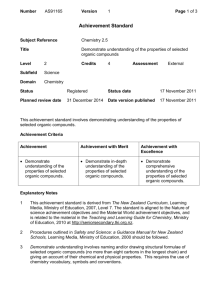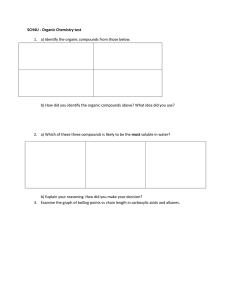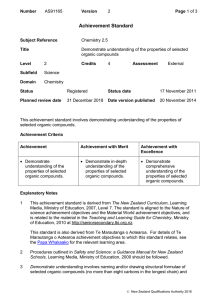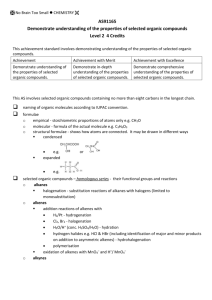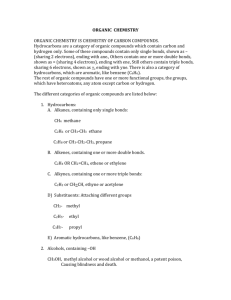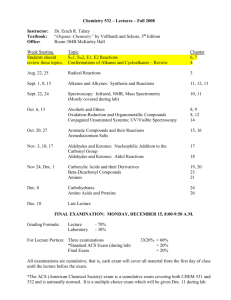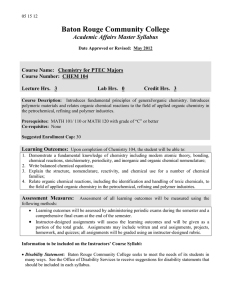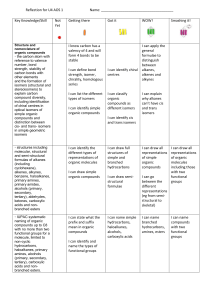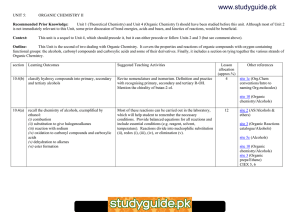Achievement Standard
advertisement
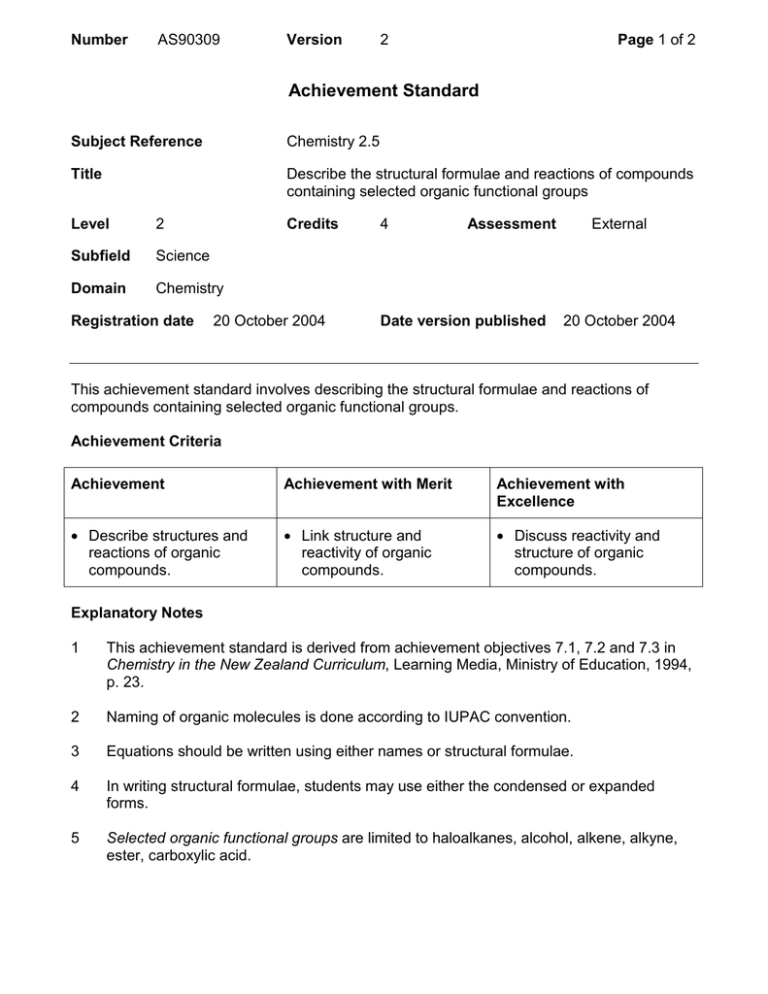
Number AS90309 Version 2 Page 1 of 2 Achievement Standard Subject Reference Chemistry 2.5 Title Describe the structural formulae and reactions of compounds containing selected organic functional groups Level 2 Subfield Science Domain Chemistry Registration date Credits 20 October 2004 4 Assessment Date version published External 20 October 2004 This achievement standard involves describing the structural formulae and reactions of compounds containing selected organic functional groups. Achievement Criteria Achievement Achievement with Merit Achievement with Excellence • Describe structures and reactions of organic compounds. • Link structure and reactivity of organic compounds. • Discuss reactivity and structure of organic compounds. Explanatory Notes 1 This achievement standard is derived from achievement objectives 7.1, 7.2 and 7.3 in Chemistry in the New Zealand Curriculum, Learning Media, Ministry of Education, 1994, p. 23. 2 Naming of organic molecules is done according to IUPAC convention. 3 Equations should be written using either names or structural formulae. 4 In writing structural formulae, students may use either the condensed or expanded forms. 5 Selected organic functional groups are limited to haloalkanes, alcohol, alkene, alkyne, ester, carboxylic acid. Number AS90309 Version 2 Page 2 of 2 6 The compounds are limited to those containing no more than eight carbon atoms. Larger organic molecules may be used in questions involving the linking of structure and reactivity. 7 Isomerism is limited to structural and geometric (cis-trans) isomers. 8 Knowledge of primary, secondary, and tertiary classification of alcohols and haloalkanes is expected. 9 Reactions are limited to: • the addition reactions of alkenes with H2/Pt, Cl2, Br2, H2O/H+ and HCl (including identification of major and minor products on addition to asymmetric alkenes) • the reactions of alkenes with MnO4– • polymerisation of alkenes • halogenation of alkanes (limited to monosubstitution) • oxidation of primary alcohols to form carboxylic acids • elimination of water from alcohols • acid reactions of carboxylic acids • formation of esters (may include triglycerides) from carboxylic acids and alcohols • hydrolysis of esters (may include triglycerides). 10 Terms: • Describe requires the student to identify, name, draw, give characteristics of, or an account of. • Discuss requires the student to show understanding as to how or why something occurs by linking chemistry ideas/principles. It may involve students in justifying, relating, evaluating, comparing and contrasting, analysing. Quality Assurance 1 Providers and Industry Training Organisations must be accredited by the Qualifications Authority before they can register credits from assessment against achievement standards. 2 Accredited providers and Industry Training Organisations assessing against achievement standards must engage with the moderation system that applies to those achievement standards. Accreditation and Moderation Action Plan (AMAP) reference 0226
